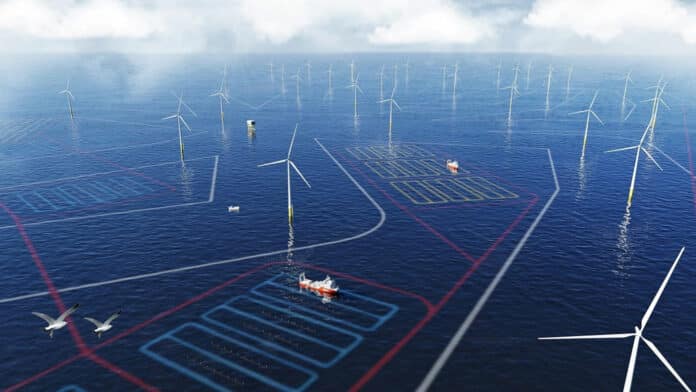The American company Amazon is putting significant funds into the world’s first commercial-scale seaweed farm located between offshore wind turbines.
The project, known as North Sea Farm 1, will be located on a wind farm off the coast of the Netherlands. It is designed to test and improve methods of seaweed to sequester carbon. By locating the farm in previously empty space between turbines, the project is able to expand seaweed cultivation in the otherwise heavily used North Sea.
The project is led by the non-profit organization North Sea Farmers (NSF) and is expected to become operational by the end of this year. It is further managed by a consortium of scientific researchers and partners from the seaweed industry.
Amazon is granting €1.5 million ($1.6 million) to create this seaweed farm and carry out a year’s scientific research into carbon reduction through seaweed farming. The funding comes from its $100 million global Right Now Climate Fund – Amazon’s commitment to supporting nature-based solutions, which is in addition to the work the company is doing to decarbonize its business.
The North Sea Farm 1 aims to kickstart innovation in offshore seaweed farming. It will consist of a 10-hectare seaweed farm, which is expected to produce at least 6,000kg of fresh seaweed in its first year.
The recent funding will also support North Sea Farmers in analyzing and improving the farm’s production capabilities. At the same time, researchers will explore the potential of seaweed farms to remove carbon from the atmosphere, modeling the impacts of large-scale seaweed farming.
“Seaweed could be a key tool in removing carbon dioxide from the atmosphere, yet it’s currently farmed at a relatively small scale in Europe,” said Zak Watts, Director of EU Sustainability at Amazon. “We’re delighted to fund this project to help us reach a greater understanding of its ability to help fight climate change.”
Seaweed has great potential to help tackle climate change by absorbing CO2 as it grows, and could enhance biodiversity. Locating seaweed farms between offshore wind turbines uses untapped space to capture carbon.
If scaled, the European seaweed farming sector has the potential to reduce CO2 by millions of tonnes a year by 2040. Seaweed can also be used to manufacture packaging, food and clothing.
